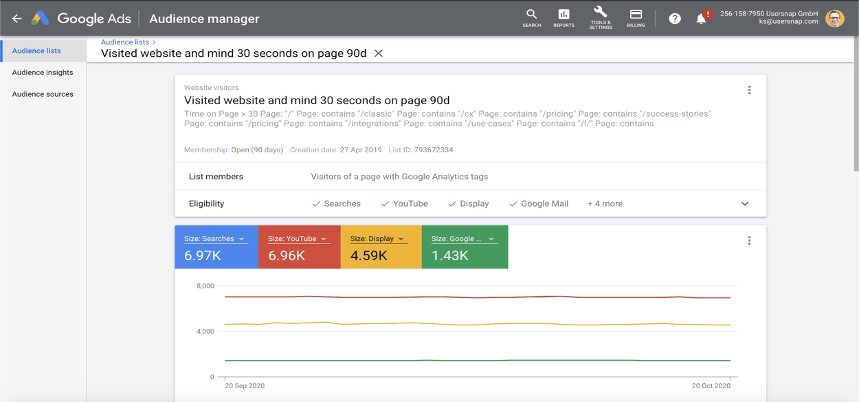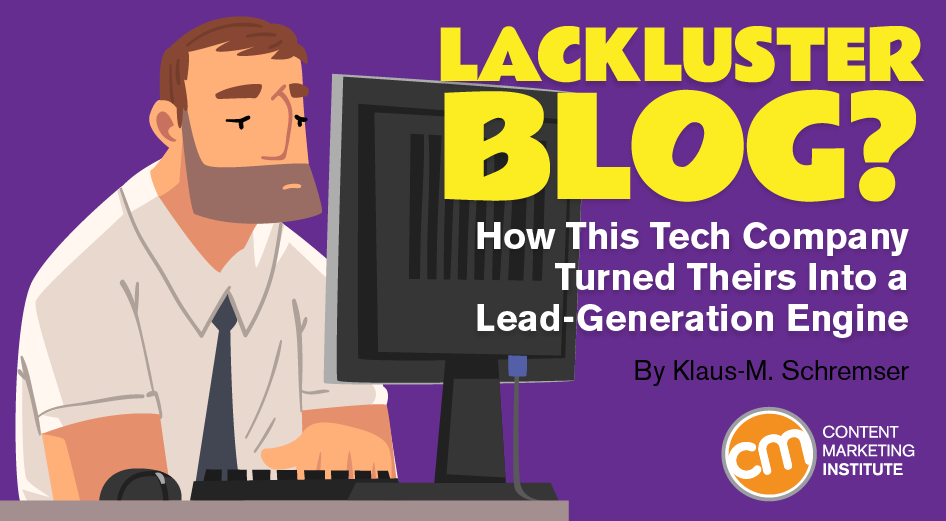
What do you call a blog with 70,000 monthly visitors that accounts for 50 product trials a month? A lot of wasted potential.
Although our Usersnap blog covered topics connected to our product, readers didn’t want to try the product.
We were not alone. Blogs across industries and verticals are getting fewer leads despite the resources invested in them. And Orbit Media research shows that 52% of bloggers say it’s getting harder to get readers to engage with their content.
Why? We set out to understand our challenge.
Blogs across industries and verticals are getting fewer leads despite the resources invested in them, says @webcms via @CMIContent. Click To TweetAnd we found some answers, including new-to-us tactics.
Let me explain.
This story is about how we build a content lead engine instead of only managing a blog.
Though we had a lot of experience building the blog, we reached out to an expert in content engines that converted leads – Manuel Weiss, digital marketing consultant and co-founder of CodeShip. We applied his insights and tweaked the systems and frameworks to fit our audience.
HANDPICKED RELATED CONTENT:
Refine the SEO strategy
To us, good content is what potential customers stumble across on our website or blog while looking for answers on Google.
We brainstormed about keywords, topics, and phrases related to our product and what our potential customers search. Then we conducted research, analyzing traffic and competition to identify the keywords that were more likely to lead to product trial conversions. Those keywords informed our content creation.
For example, we noticed our target audience searching for “best customer feedback tools” so we wrote about the topic, making sure to include that keyword phrase in the headline and the posts.

We also used those topics for content we published on third-party sites to increase our relevant SEO rankings.
HANDPICKED RELATED CONTENT:
Restructure and categorize content
We redid our content marketing strategy based on what we had learned from the consultant.
Originally, our target audience was explicitly interested in the categories of quality assurance (QA) and user acceptance testing (UAT) because our product was only focusing on these use cases.
But we had to add more categories as our product had been enhanced to be an extensive user feedback platform. The new categories included customer experience (CX), customer feedback, and customer research.
The expansion of our product also expanded the audience personas. We added roles such as product managers, product marketers, product designers, UX researchers, and CX managers. Using qualitative micro surveys on our blog and website, normally used for product research, we dug into what audience members wanted to read, how they could envision using our product, and what we could do to fill their void with knowledge.
HANDPICKED RELATED CONTENT:
Add a new tactic
What we learned in this process was that visitors cannot be converted directly from the blog. Those readers consumed our content because they were looking for an answer, not a product solution. We needed a new tactic to nurture those visitors slowly and softly to the value of our product.
The answer came in the form of e-books. We created an e-book for each primary topic category: quality assurance, user acceptance testing, customer feedback, customer experience, and customer research.
These e-books included interviews with exceptional individuals from well-known companies like Typeform, Uber, and Trello, and playbooks on how to achieve goals related to the topic. We also incorporated insights from our customer feedback strategies.

To make the e-books lead magnets, we gated them. To receive the e-book, visitors completed a brief registration form.
HANDPICKED RELATED CONTENT:
Deploy the sales funnel
The e-book recipients then went into a content funnel. In a weekly cadence over 45 days, we sent an email with increasingly valuable knowledge content. Near the end of that time, the emails incorporated more product promotions to bring them nearer to our product value so they would sign up for a product trial – our content marketing goal.
We split our email nurturing flow into two sequences. The first sequence related to the e-book topic started after registration and eight days later the lead would receive another e-book. In the second sequence, we educated our audience about a customer success story and later about a unique offering for our product.

HANDPICKED RELATED CONTENT:
Add remarketing
While many visitors read our blog posts in the newly expanded categories, not too many of them registered for an e-book. We started retargeting campaigns to follow them on their journey.
We created Google remarketing ads to promote e-book downloads. We targeted blog visitors within the previous 90 days who stayed for at least 30 seconds. We used the time-on-site parameter to avoid spending advertising budgets on users who were not intentionally on our blog.
An ad campaign for its e-books targeted blog visitors who stayed at least 30 seconds, says @webcms via @CMIContent. Click To Tweet
Early results
Just a reminder of where we were before we went from a blog-only strategy to a new content engine: We published one article per month and saw about 70,000 visitors a month. Of those visitors, 50 people signed up for a product trial.
After running the new content lead engine for four months, monthly blog visitors grew to 110,000 (57% increase). We collect about 2,000 email leads a month from e-book downloads. And … drumroll … we have 250 product trials per month.
Our content engine generated five times more product trials than our blog-only approach.
.@Usersnap’s #content engine generated five times more product trials than its blog-only approach, says @webcms via @CMIContent. Read how > Click To Tweet
We’re still at it
Obviously, we are far from done. We still tweak our content lead engine by observing the traffic, engagement time, conversions through the lead magnets, and especially the conversions through the email nurturing.
A couple of more things we have done:
- Moved our email nurturing system from Mailchimp to ActiveCampaign, which offers better triggers for audience behaviors.
- Removed qualification fields from our e-book registration forms to make sign-ups simpler, resulting in a higher conversion rate.
We learned to take tiny steps and always measure to improve our content engine.
HANDPICKED RELATED CONTENT:
Build your content engine
To make your content marketing valuable to your business, you must make it accountable. We chose to make it work with a content engine to generate and nurture leads. This method increased our blog visitors by more than 50% and increased our blog’s product trial leads by five times.
There’s no reason you can’t do the same.
Take some expert advice. Listen to your audience. Develop and implement a strategy. Then tweak until the content engine starts operating on autopilot.
HANDPICKED RELATED CONTENT:
Please note: All tools included in our blog posts are suggested by authors, not the CMI editorial team. No one post can provide all relevant tools in the space. Feel free to include additional tools in the comments (from your company or ones that you have used).
Cover image by Joseph Kalinowski/Content Marketing Institute

